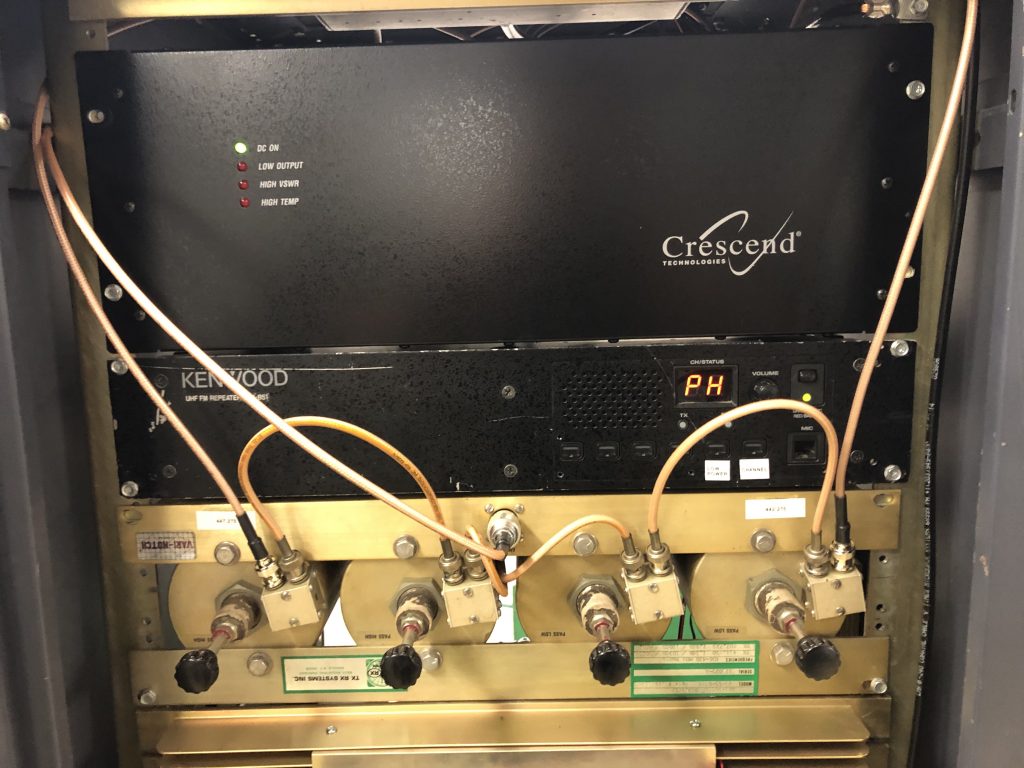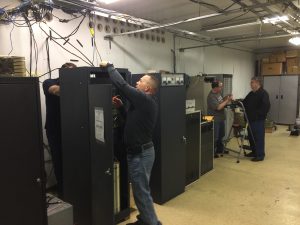
The conversion of SARA’s 442.275 repeater to a multi-mode digital machine is complete. Barry KI8B, Marty N8XPK, Rick WB8UTW, Jason N8JDM, John N8CD, and Gary AA8CS assembled their gear for the job as planned on Saturday May 4th. Shortly after 8:15 the work began of removing the analog bits of the UHF machine and replacing them with the new gear. The Kenwood TKR-850 donated by N8XPK was put together with a Raspberry Pi and a digital multi-mode “Pi Hat” from repeater-builder.com.
Rather than just replace the hardware, we took the opportunity to re-arrange some of the equipment in the rack for better fit, and to re-route cabling to isolate power, RF, and audio lines. The technical committee declared the cabinet to be an RF adapter-free zone, and replaced all of the coaxial jumpers with new, custom-made cables that were put together on site with double-shielded, low loss, Teflon based coax and new connectors. Especially in a high power, full duplex system like a repeater, even the smallest flaw in an RF wiring can create noise that you might never see in a normal home station, so eliminating adapters and sub-standard cable is always the goal in a repeater. All of the cables were replaced on the VHF repeater in 2017 when we installed the new equipment, but the UHF machine was in need of an RF overhaul.
With several of the components of SARA’s repeater systems moved and re-mounted in the rack, enough room was made to mount the UHF amplifier inside the cabinet. This cleaned up the system and wiring even more.
With everything re-positioned and re-cabled in the rack, SARA’s VHF and UHF repeaters were returned to service and tested.
The new system supports 4 digital modes, DMR, DSTAR, YSF, and P25. If you’d like to use the new system, check out the details from under the menu “Repeaters & Nets”, then “Digital Repeater Info”. There you’ll find links to the current status of the UHF repeater, an introduction to the digital system, and some tips and guidelines for using the repeaters on DMR, DSTAR, and YSF . There’s also information on what the systems are linked to and a few digital-mode nets you might be interested in tuning into. An updated overview of our site and our system is on the website, and even more details are on the repeater details page. All of these are living documents, so check back often for usage and programming tips and details for getting the most out of our repeaters.

